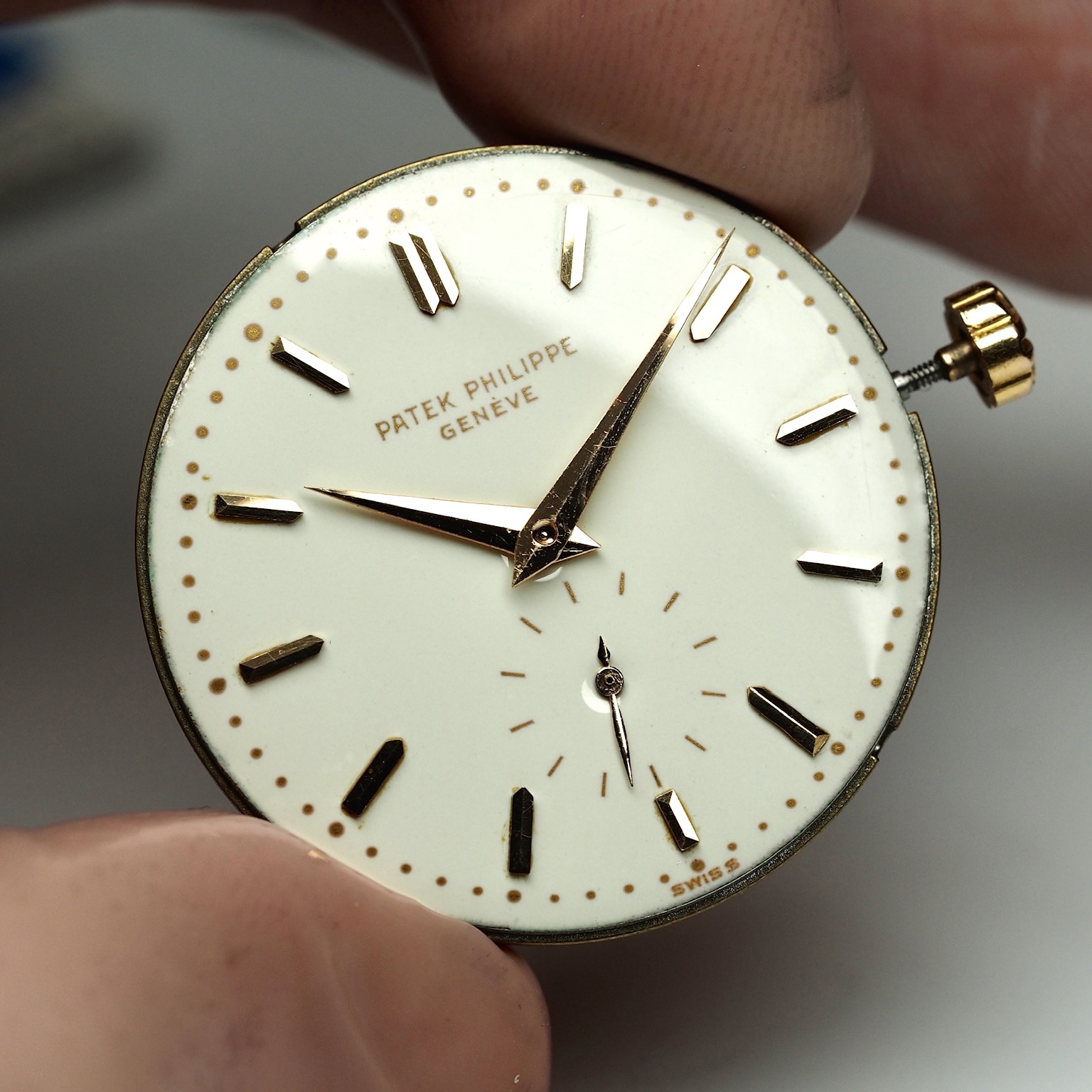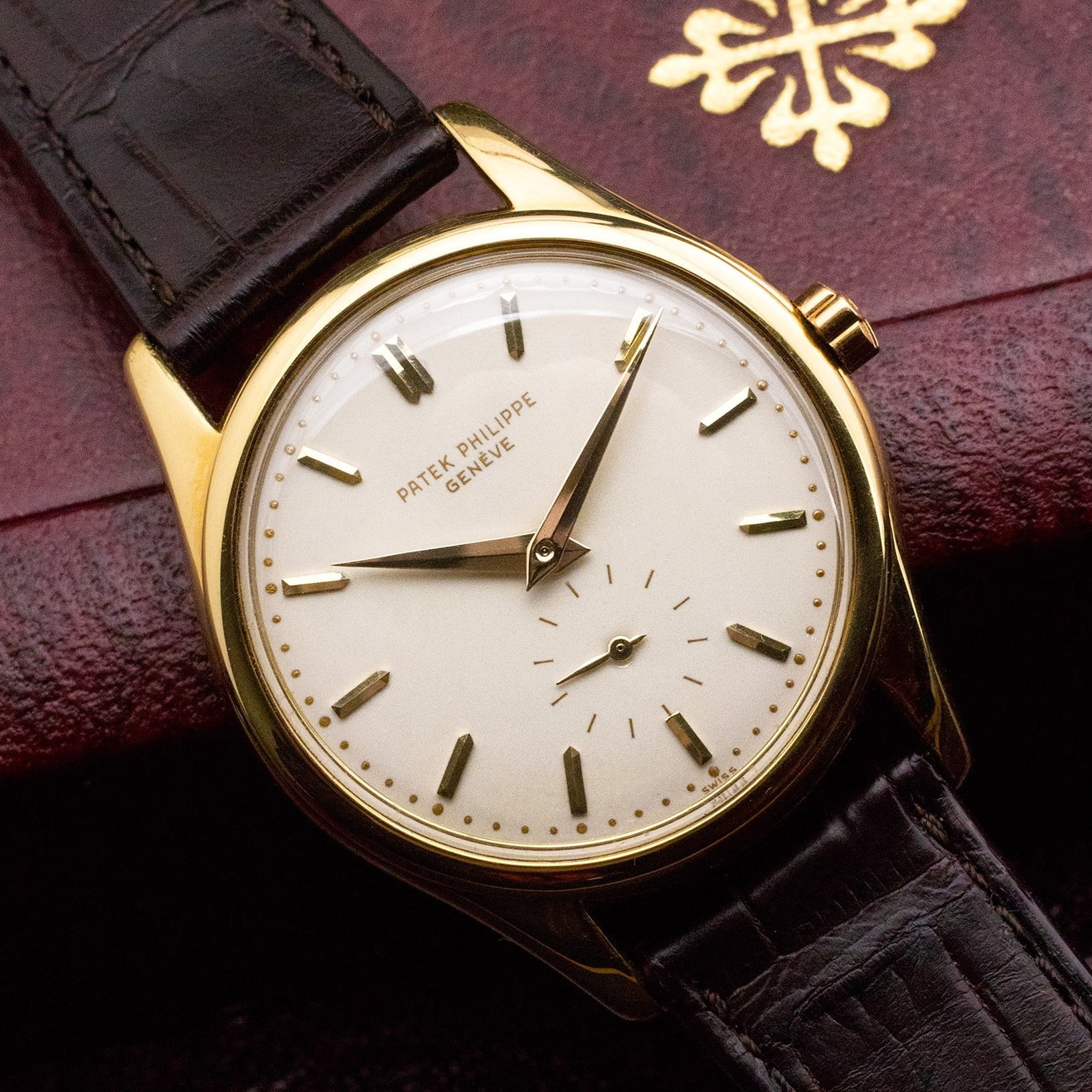
Patek Philippe Calatrava 2526
Today, we’re taking a deep dive into one of Patek Philippe’s most exceptional creations. The reference 2526 is not just another Calatrava—it may very well be the most refined time-only dress watch ever made. In this watch guide, we’ll walk through the history, design, and mechanical beauty of a piece that quietly changed everything.
The Calatrava was introduced in the early 1930s by the Stern brothers, who had recently taken control of Patek Philippe during a financially precarious period for the company. In the midst of the Great Depression, there was little appetite—or capital—for complicated mechanical marvels. The solution? A pure, elegant, time-only design rooted in Bauhausprinciples: form follows function. Thus, the reference 96 was born.
The name “Calatrava” derives from the 12th-century Calatrava cross, a symbol adopted by Patek Philippe early on but not actively used until the debut of the ref. 96 in 1932. Over the next century, the Calatrava line would become a cornerstone of the brand, embodying simplicity, functionality, and enduring style.

History
Introduced in 1953, the 2526 was revolutionary—and priced accordingly. At CHF 3,400, it was an astonishingly expensive watch for its time. For context, the iconic and far more complicated ref. 2499 retailed for only CHF 400 more. So what made the 2526 so special?
The answer lies in a combination of design, innovation, and attention to detail rarely seen before—or since. When it launched, the 2526 was immediately embraced by discerning collectors. Among its notable owners: Andy Warhol and J.B. Champion, the latter acquiring the very first piece off the production line.
This was not a continuation of a series, nor was it succeeded by a direct follow-up. The 2526 was—and remains—a singular creation. Production ceased in 1960 after just a few thousand pieces were made, across several configurations.

Case
Crafted by master case maker F. Baumgartner, the 36mm case of the 2526 is deceptively substantial. Its rounded shape and slightly domed bezel provide both visual balance and structural robustness. The thick lugs give the watch presence, while the overall silhouette remains restrained and timeless.
Unusual for a Calatrava of this era, the case features a screw-down caseback, offering improved resistance to moisture—a subtle nod to functionality without sacrificing elegance.
As expected, no examples were made in stainless steel; it was considered too modest for such a refined timepiece. Instead, most were crafted in 18k yellow gold, with fewer in rose gold (approximately 1:10 in ratio). The rarest variants, however, are in white gold and platinum, with fewer than 25 known examples of each.

Crown
Every 2526 is fitted with a beautifully proportioned “Double P” crown—not exclusive to this model, but particularly striking here. Its size, precision, and signature engraving add a small but meaningful detail to the watch’s overall design language.
Bracelet & Clasp

I would say the bracelet is subordinate to a dress watch as this usually isn’t taken into account when designing a piece like this. They are more frequently fitted with a leather strap of choice anyhow. But I believe the bracelet plays an important part of the 2526 and curiously, the majority of them where actually sold on a solid metal bracelet matching the material of the case. Designed by the famous Gay Freres. Among the variations is the beloved “Lobster” bracelet, mostly associated with the 2526.
In the clasp one can find the “GF deer” as the hallmark and oftentimes but not necessarily it’s also signed by Patek Philippe, again with the Double P logo, matching the crown.

Dial & hands
Now on to something really interesting: the dial. Most collectors know the 2526 as the Calatrava with the double baked enamel dial. The use of enamel for dial making is something we rarely see and is only being done by the very top of the brands due to the fact that it’s rather costly and difficult to produce. Today, Patek still create specials with “Cadran Email”, but back in the days it was really unique, even more so because the 2526 was not a limited edition, nor a super complication nor only available upon special request.

But what is so special about the decorative art that is enameling. First of all, aesthetically it adds so much charm to the watch. The way the light reflects on the surface is fascinating. The thick glaze creates dimples near to the batons and base of the hands, especially on the first series dials. In combination with the deep brown text and second markers it gives it an unparalleled depth.

Secondly, the durability. The Patek brochure read: “The dial, of baked enamel, is impervious to the action of outside agents, such as tarnishing produced by sunlight”. Whilst it was meant to last forever, the result turned out to be quite different. Enamel is hard and strong but has the tendency to break or shatter since it does not react well to the slightest bending, something that could happen when dropped for example. Service replacement dials, later installed by Patek Philippe, were not enameled.
The enamel dial is iconic to this Calatrava but not all of them were fitted with one. In fact, the most special ones aren’t; like the famous LBJ dials that read: “Do unto other as you would have them do unto you”. The ones with diamond markers instead of the batons aren’t enamel either. There are a couple more special dials, for example with applied Breguet numerals, luminous Arabic hour markers, retailer signed or black dials rather than the eggshell enamel.

Movement
The movement does a lot of the heavy lifting to maintain the prestige the 2526 is known for. I’m myself, not that much of a movement geek but I’m inclined to make an exception for the 12-600AT as it is, what I believe: the best time-only movement ever! It was launched in 1953 and straight away featured in multiple references, including the 2526, as their first self-winding caliber. It is not like Patek Philippe wasn’t able to produce an automatic movement earlier on, but Rolex had a twenty-year patent on this mechanism. If you witness the construction and finishing of this movement, my best guess would be, is that they used these 2 decades to develop and finetune the 12-600, quality wise resulting in a caliber that stands in a league of its own.
And this is where it gets really interesting and, in my opinion, elevates Patek Philippe from other brands. I said “witness” because you had to unscrew the case back in order to behold the beauty, since see-through case backs weren’t invented yet. So basically, the hand-finishing they applied, to decorate the 18K rotor for example, was something the customer would probably never see nor had any practical reason, but they did it anyway. Talking about going the extra mile and not bragging about it. But it must be a real joy for a watchmaker to open this watch and discover the swan-neck regulator and Gyromax balance wheel, making sure the watch can be adjusted to extreme precision, with just a 1 second variation in 24 hours. The Gyromax still is a trademark up to this day and Patek Philippe’s own seal of quality (introduced in 2009) is inspired on the PP crest engraved on the rotor of this movement.

Conclusion
This is what we mean when we say a watch is more than just a way to tell time. The Patek Philippe Calatrava 2526 is a confluence of history, design, innovation, and restraint. It’s a piece that rewards deep observation and patient appreciation.
Is it perfect? In many ways, yes. From its graceful case to its artisanal dial and legendary movement, the 2526 embodies everything that makes Patek Philippe special—without saying a word.
Hopefully, you’ve come to see why this reference holds such a special place in my heart. And maybe, next time you glance at a Calatrava, you’ll feel that same quiet reverence the 2526 so richly deserves.